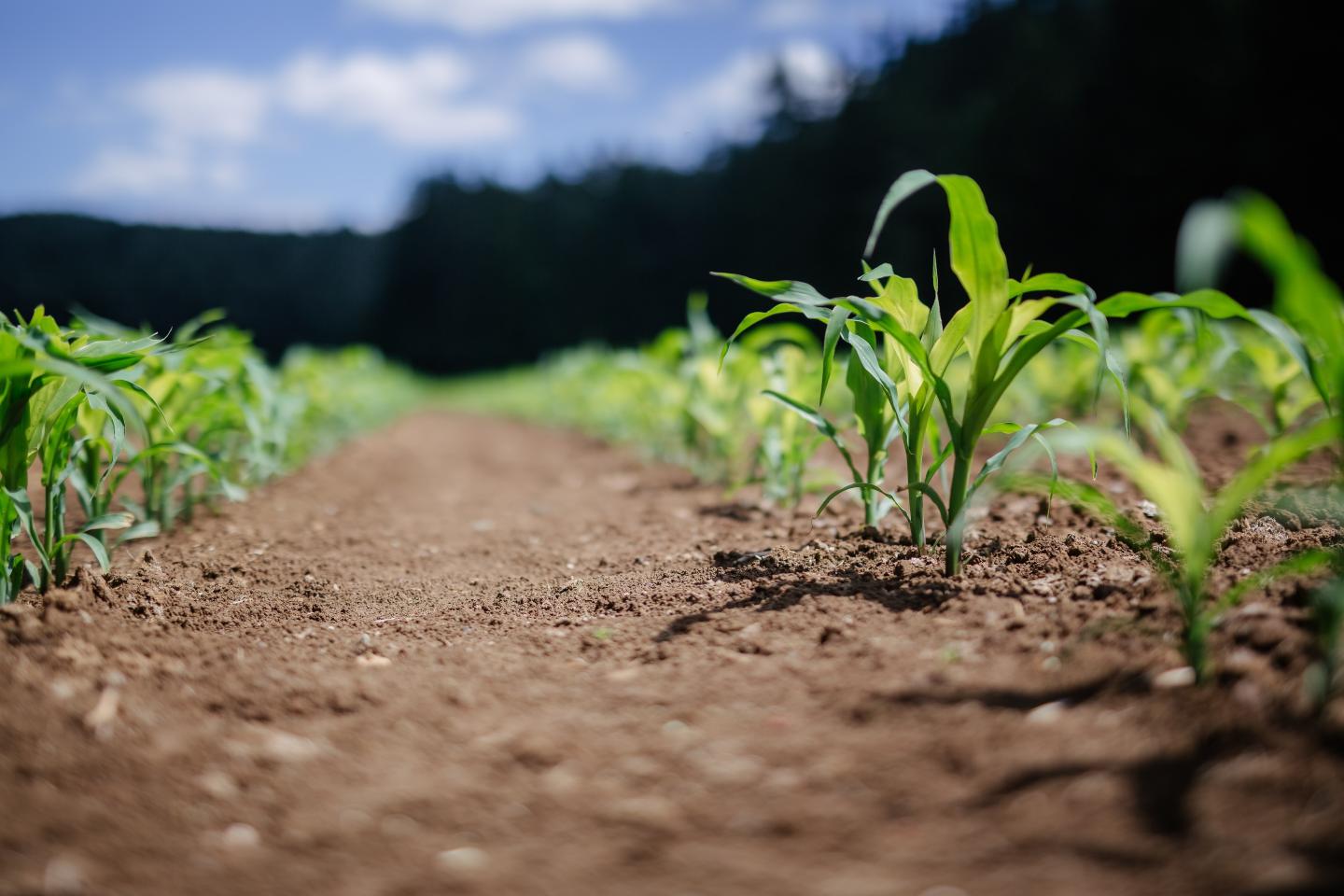Ranking Criteria for NRCS Programs – Minnesota

Application Overview
Any applicant may submit an application for participation in ACEP, EQIP, CSP, or RCPP. The NRCS State Conservationist or Area Director, in consultation with stakeholders including the State Technical Committee, Tribal Conservation Advisory Councils, and Local Work Groups, has developed the following ranking criteria to prioritize and select applications that best address the applicable program purposes and priority natural resource concerns in Minnesota
The NRCS State Conservationist or Area Director will establish application batching periods and select the highest ranked applications for funding, based on applicant eligibility and the NRCS ranking process. In Fiscal Year 2024 NRCS will use its Conservation Assessment Ranking Tool (CART) to assess and rank all eligible applications for NRCS conservation programs.
Inventory and Assessment in CART
CART is a decision support system designed to provide a consistent, replicable framework for the conservation planning process based on geospatially referenced information, client-provided information, field observations, and NRCS conservation planner expertise. CART is designed to assist NRCS conservation planners as they assess site vulnerability and existing conditions, and identify natural resource concerns on a unit of land.
In CART, assessments of existing management and conservation efforts are compared against conservation planning criteria thresholds to determine the level of conservation effort needed to address identified natural resource concerns. The results are then used to inform NRCS conservation planning activities for the client. NRCS also uses CART to consolidate resource data and program information to prioritize program delivery and report outcomes of NRCS investments in conservation.
In general, resource concerns fall into one of three categories for the assessment method used in CART to assess and document a resource concern:
- Client Input/Planner Observation: A streamlined list of options is presented to the planner to document the client input and/or planner observation of the resource concerns present. These observations are compared to the conservation planning criteria thresholds.
- Procedural/Deductive: A large group of resource concerns fall into this category and are assessed using a resource concern-specific tool or a list of inventory-like criteria. Due to variability in State tools, assessment questions and answers will be broad in nature to allow States to more carefully align them with State conditions.
- Predictive: The remaining resource concerns are assessed using a predictive interactive model simulation. The CART systems attempt to replicate the outcomes related to the assessment threshold being met or not compared to the model outputs.
After identifying resource concerns and describing existing conditions, planned conservation practices and activities can be added to the existing condition to determine the state of the proposed management system. Supporting practices that are needed to support primary conservation practices and activities are also identified, but do not add conservation management points to the total.
If the client is interested in financial assistance through an NRCS conservation program, the inventory and assessment information, along with client decisions related to conservation practice adoption, are directly and consistently transferred from the assessment portion of CART to the ranking portion of CART. Based on the transferred assessment information and the conservation practices proposed for implementation, CART identifies the appropriate program ranking pool(s).
Ranking in CART
In general, NRCS program ranking criteria uses the following guiding principles:
- Degree of cost-effectiveness of the proposed conservation practices and activities;
- The level of performance of proposed conservation practices and activities;
- Treatment of multiple resource concerns or national priority resource concerns;
- Magnitude of the environmental benefits resulting from the treatment of resource concerns
reflecting the level of performance of proposed conservation practices and activities; and
- Compliance with Federal, State, local or tribal regulatory requirements with regards to natural resources.
CART uses a set of National Ranking Templates developed for each NRCS program and initiative. The National Ranking Templates contain four parameters that are customized for each program to reflect the national level ranking criteria. The four parameters are:
- Land Uses - NRCS has developed land use designations to be used by planners and modelers at the field and landscape level. Land use modifiers more accurately define the land’s actual use and provide another level of specificity and help denote how the land is managed. Land use designations and modifiers are defined in Title 180, National Planning Procedures Handbook, Part 600.
- Resource Concerns - An expected degradation of the soil, water, air, plant, or animal resource base to the extent that the sustainability or intended use of the resource is impaired. Because NRCS quantifies or describes resource concerns as part of a comprehensive conservation planning process, that includes client objectives, human and energy resources are considered components of the resource base.
- Practices - A specific treatment used to address resource concerns, such as structural or vegetative measures, or management techniques, which are planned and implemented in accordance with applicable standards and specifications.
- Ranking Component Weights – A set of five components comprise the ranking score for an individual land-based assessment. The five components are:
- Vulnerability - Site vulnerability is determined by subtracting the existing condition and existing practice scores from the thresholds. This score is weighted by ranking pool to address the resource concerns prioritized by that ranking pool.
- Planned Practice Effects - The planned practice effect score is based on the sum of the planned practice on that land unit which addresses the resource concern. This score is weighted by ranking pool to address the resource concerns prioritized by that ranking pool.
- Resource Priorities - National and State resource priorities are established to address the most critical land and resource considerations and are based on NRCS national and State priorities identified with input from National, State, and local stakeholders.
- Program Priorities - National and State program priorities are established to maximize program effectiveness and advance program purposes and are based on NRCS national and State priorities identified with input from National, State, and local stakeholders.
- Cost Efficiency – Summation of ‘Planned Practice Points’ divided by the log of the ‘Average Practice Cost’.
NOTE: The points for vulnerability, planned practice effects, and cost efficiency are garnered from the assessment portion of CART.
Minnesota created State-specific ranking pools within the above-described National Ranking Template parameters. The State ranking pools contain a set of questions that are divided into the following sections – applicability, category, program questions, and resource questions. Ranking pool customization allows States to focus funding on priority resource concerns and initiatives identified at the State level with input from NRCS stakeholders. Each eligible application may be considered for funding in all applicable ranking pools by program.

Natural Resource Concerns
Conserving our natural resources is a vital part of creating and maintaining healthy ecosystems on our nation’s lands.
How to Get Assistance
Do you farm or ranch and want to make improvements to the land that you own or lease?
Natural Resources Conservation Service offers technical and financial assistance to help farmers, ranchers and forest landowners.

To get started with NRCS, we recommend you stop by your local NRCS field office. We’ll discuss your vision for your land.
NRCS provides landowners with free technical assistance, or advice, for their land. Common technical assistance includes: resource assessment, practice design and resource monitoring. Your conservation planner will help you determine if financial assistance is right for you.
We’ll walk you through the application process. To get started on applying for financial assistance, we’ll work with you:
- To fill out an AD 1026, which ensures a conservation plan is in place before lands with highly erodible soils are farmed. It also ensures that identified wetland areas are protected.
- To meet other eligibility certifications.
Once complete, we’ll work with you on the application, or CPA 1200.
Applications for most programs are accepted on a continuous basis, but they’re considered for funding in different ranking periods. Be sure to ask your local NRCS district conservationist about the deadline for the ranking period to ensure you turn in your application in time.
As part of the application process, we’ll check to see if you are eligible. To do this, you’ll need to bring:
- An official tax ID (Social Security number or an employer ID)
- A property deed or lease agreement to show you have control of the property; and
- A farm number.
If you don’t have a farm number, you can get one from USDA’s Farm Service Agency. Typically, the local FSA office is located in the same building as the local NRCS office. You only need a farm number if you’re interested in financial assistance.
NRCS will take a look at the applications and rank them according to local resource concerns, the amount of conservation benefits the work will provide and the needs of applicants. View Application Ranking Dates by State.
If you’re selected, you can choose whether to sign the contract for the work to be done.
Once you sign the contract, you’ll be provided standards and specifications for completing the practice or practices, and then you will have a specified amount of time to implement. Once the work is implemented and inspected, you’ll be paid the rate of compensation for the work if it meets NRCS standards and specifications.

